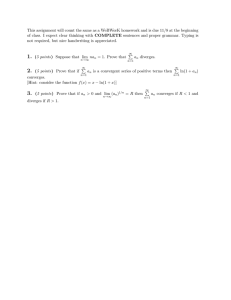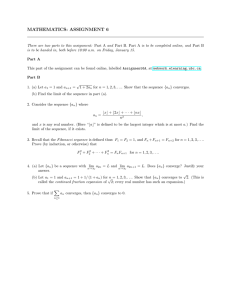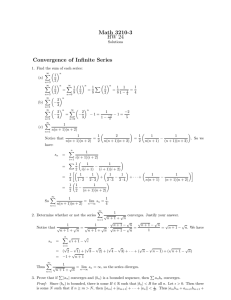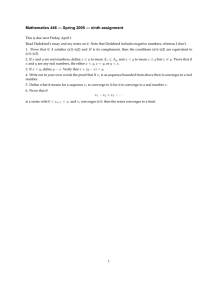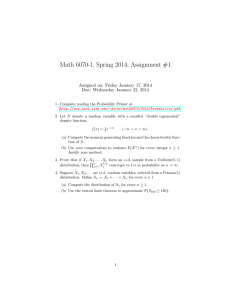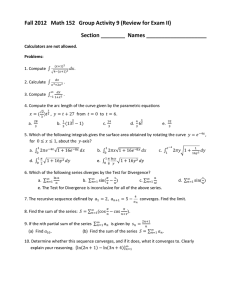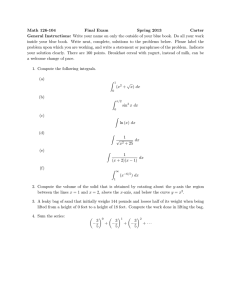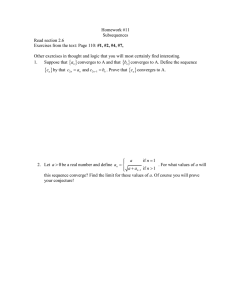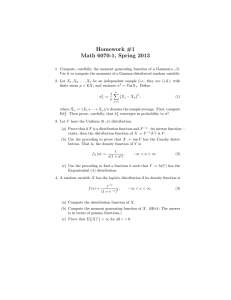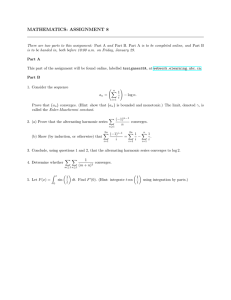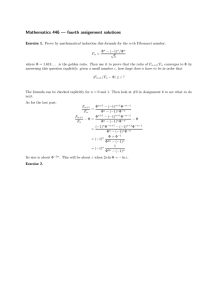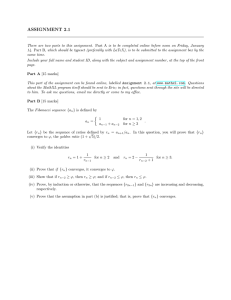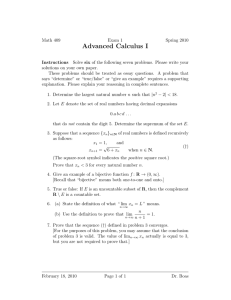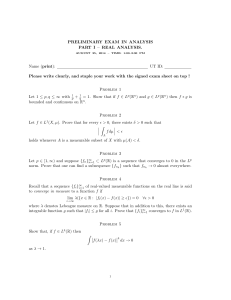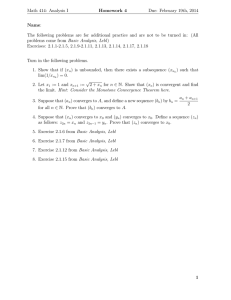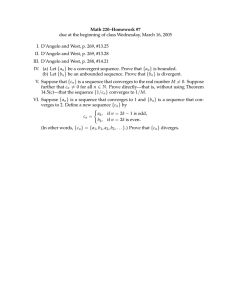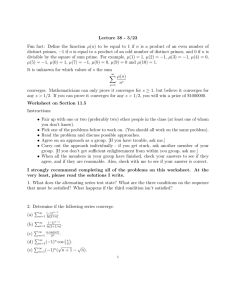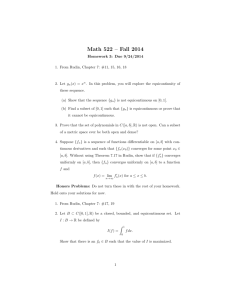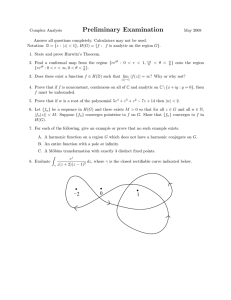17 IMC Competition 2010 th
advertisement
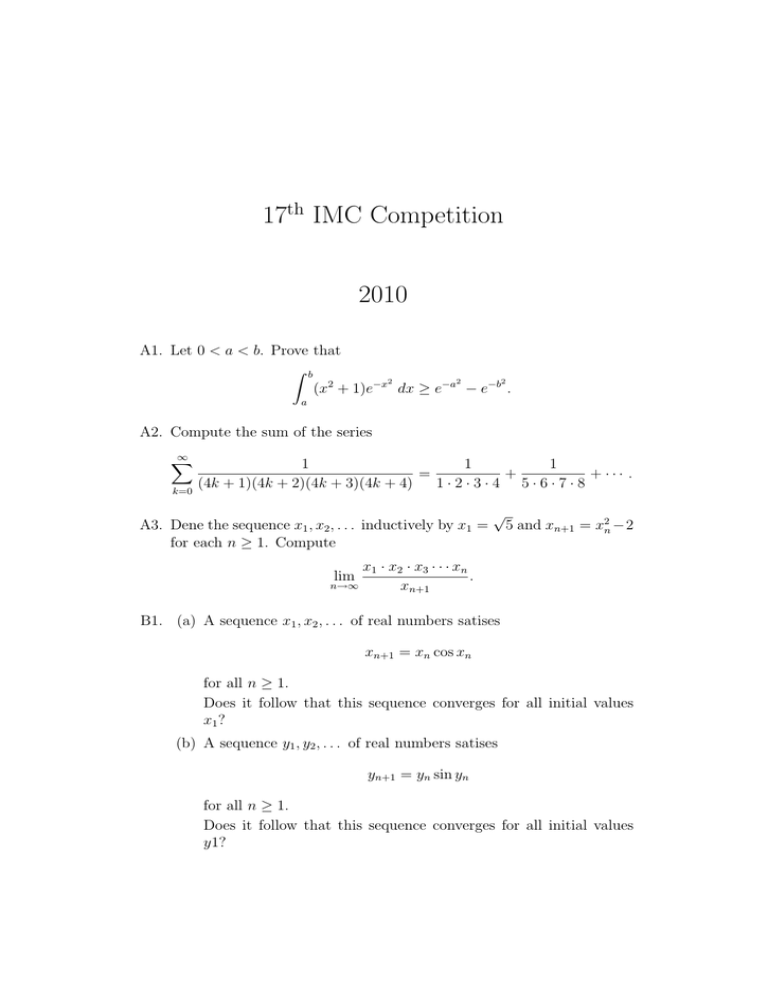
17th IMC Competition
2010
A1. Let 0 < a < b. Prove that
Z b
2
2
2
(x2 + 1)e−x dx ≥ e−a − e−b .
a
A2. Compute the sum of the series
∞
X
k=0
1
1
1
=
+
+ ··· .
(4k + 1)(4k + 2)(4k + 3)(4k + 4)
1·2·3·4 5·6·7·8
A3. Dene the sequence x1 , x2 , . . . inductively by x1 =
for each n ≥ 1. Compute
√
5 and xn+1 = x2n −2
x1 · x2 · x3 · · · xn
.
n→∞
xn+1
lim
B1. (a) A sequence x1 , x2 , . . . of real numbers satises
xn+1 = xn cos xn
for all n ≥ 1.
Does it follow that this sequence converges for all initial values
x1 ?
(b) A sequence y1 , y2 , . . . of real numbers satises
yn+1 = yn sin yn
for all n ≥ 1.
Does it follow that this sequence converges for all initial values
y1?
B2. Let a0 , a1 , . . . , an be positive real numbers such that ak+1 − ak ≥ 1 for
all k = 0, 1, . . . , n − 1. Prove that
1
1
1
1
1
1
1+
1+
··· 1 +
≤ 1+
1+
··· 1 +
.
a0
a1 − a0
an − a0
a0
a1
an
B3. Denote by Sn the group of permutations of the sequence (1, 2, . . . , n).
Suppose that G is a subgroup of Sn such that for every π ∈ G \ {e}
there exists a unique k ∈ {1, 2, . . . , n} for which π(k) = k. (Here e is
the unit element in the group Sn .) Show that this k is the same for all
π ∈ G \ {e}.
